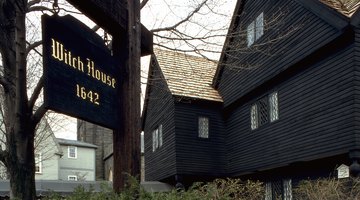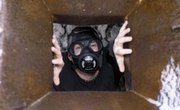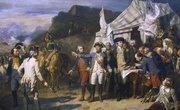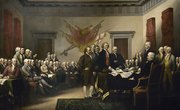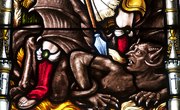During the Salem Witch Trials of 1692 and the Red Scare of the 1950s, communities under a great deal of stress hosted formal hearings during which members of these communities accused others of violating social standards. While these periods in history share many similarities, they were also distinctly different times that produced distinctly different consequences. However, when both periods ended, many accusers were filled with misgivings regarding decisions they made during the community meltdowns.
Substance of Claims
Fueled by allegations of unholiness, the Salem Witch Trials differ from the Red Scare of the 20th century, which gained momentum on the basis of allegations of communism. Both movements targeted individuals on the basis of shaky testimony provided by their colleagues. The Salem Witch Trials investigated claims made by citizens within Massachusetts communities, some of whom were adolescent girls. These girls provoked hysteria in their communities by alleging that certain individuals were engaged in the practice of witchcraft. Testimony that fueled the Red Scare was provided primarily by adults, many of whom were professionals. In many cases, Red Scare testimony was based on morsels of fact, such as the fact that a person had once registered as a communist decades prior to being investigated.
Religious vs. Secular
Though operating within a legal framework, the Salem Witch Trials emerged from the Puritan spiritual movement, whereas the Red Scare revolved around reactionary political concerns. Although conservative religious figures fueled both movements, the Salem Witch Trials were conducted within a community that was acutely aware of biblical doctrine. The Red Scare of the 1950s occurred at a time when American society was considered to be a "melting pot" that supported a diversity of races and creeds. Although the Red Scare was a backlash against a threatening ideology, it certainly did not aim to impose religious standards upon society.
Scope
The Salem Witch Trials were limited in their scope, only affecting members within an insular religious community. By contrast, the Red Scare was expansive in its scope, affecting politicians, businessmen and movie stars such as Lucille Ball.
The Salem Witch Trials investigated the conduct of citizens in three counties of colonial Massachusetts: Essex, Suffolk and Middlesex.
Originating as a symptom of the Cold War, which was a period of history when communist and democratic ideologies clashed, the Red Scare of the 1950s was international in scope.
Voices of Reason
Adamant opposition to both the Salem Witch Trials and the Red Scare was voiced by critics during each of these infamous periods of American history. During the Salem Witch Trials, critic Thomas Brattle observed that judges were not infallible and noted that occasional errors they made perverted justice within their government (see References). Senator Joseph McCarthy, who fueled the Red Scare of the 1950s with wild allegations that spurred highly publicized hearings, received criticism from colleagues such as Senator Margaret Chase Smith before the United States Senate voted to formally censure him on On Dec. 2, 1954.
Literary Dimensions
A wealth of literary work, both fiction and nonfiction, has been inspired by each of these historical periods. Nathaniel Hawthorne, whose grandfather, John Hathorne, presided as a judge during the Salem Witch Trials, addressed issues of strict discipline, social stigma and punishment in his work "The Scarlet Letter" (1850). Similarly, during the Red Scare of the 1950s, Arthur Miller addressed these same issues in his play "The Crucible," written almost 100 years after Hawthorne's work. Additionally, several teleplays and books have been attributed to blacklisted writers, who wrote under pseudonyms during the 1950s.
Related Articles
References
Writer Bio
James Withers has authored in excess of 200 articles on eHow, expanding on journalistic experience acquired as a commentator for the newspaper of the University of Texas at Arlington. Withers began publishing professionally in 2007. Withers holds a Bachelor of Arts in English from the University of Texas at Arlington.

